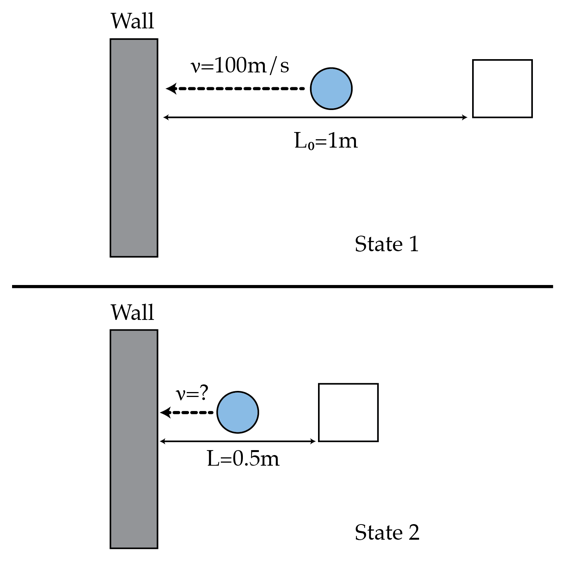Boinga, boinga, boinga goes the ball
Sometime, even with only a very slow motion, you can still create a big change in a classical mechanics system. Consider the motion in 1 dimension of a ball between a wall (which is fixed) and a block (which is moveable). The distance between the block and the wall is and the speed of the ball is very large . The ball collides perfectly elastically with the block and the wall.
Let's move the block slowly to reduce the distance between it and the wall. Estimate the speed of the ball in meters-per-second when the distance is

Details and assumptions
Neglect the size of the ball
The answer is 200.
This section requires Javascript.
You are seeing this because something didn't load right. We suggest you, (a) try
refreshing the page, (b) enabling javascript if it is disabled on your browser and,
finally, (c)
loading the
non-javascript version of this page
. We're sorry about the hassle.
The force we need to act on the block in order to move it is F = d p / d t = 2 L / v 2 m v = L m v 2 . As you move the block by the distance d L , you give the energy d E = − F d L = − L m v 2 d L to the system, and actually it will become the increase of the ball's kinetic energy d E = d K = d ( 2 m v 2 ) = m v d v :
m v d v = − L m v 2 d L ⇒ v d v = − L d L ⇒ ln v o v = ln L L o ⇒ v = v o L L o = 2 0 0 ( m / s )